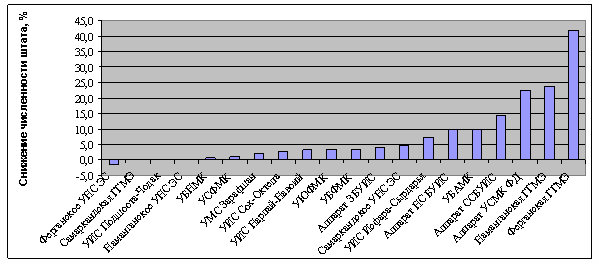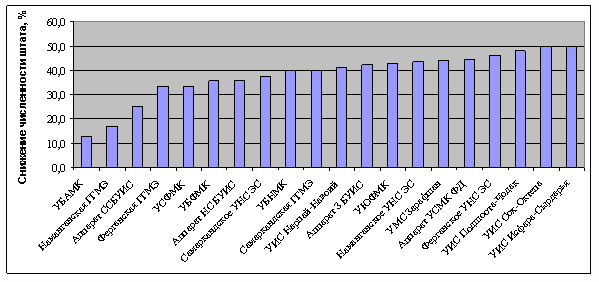
To the beginning of the section
The important components of water-management organization’s capacity are: 1) institutional potential; 2) human potential; and, 3) technological potential.
Human potential is determined by staff size of WMO, educational background and service record of the staff, as well as by relevance of responsibilities, powers and rewards. No effective performance of WMO can be achieved if its staff has many responsibilities, little powers and inadequate remuneration of their labor. Staff members need to know what they may expect, feel that they can achieve the desired results and have a personal interest in job execution.
The staffing profile and salaries of WMO (in Uzbekistan) are set on annual basis through staffing plans registered at the Ministry of Finances and approved by the Ministry of Agriculture and Water Resources. The staff of WMO is comprised of administration, operational staff, and support staff.
Major positions in WMO are as follows:
• Head
• First deputy head
• Deputy head
• Senior human resources officer
• Lawyer
• Head of division (section)
• Senior officer
• Chief accountant
• Chief economist
• Leading water engineer
• Leading hydrometry engineer
• Hydraulic engineer
• 1st category water engineer
• 2nd category water engineer
• Hydrometry engineer
• Control engineer
• 1st category control engineer
• 2nd category control engineer
• 1st category hydrotechnician
• 2nd category hydrotechnician
• 1st category technician
• 2nd category technician
• Supervisor
• Others
Staffing of WMO is to proceed from the adopted regulations that are based on:
• Specifications of equipment and structures;
• Quantitative factors that impact staff size;
• Man-hours for repair and maintenance of equipment;
• Functions of operational personnel, etc.
Recent decade, a decline in WMO’s staff size has been observed in Uzbekistan. This is especially visible in administration.

Figure 1. Decline in WMO’s staff size (total) over 2008-2013

Figure 2. Decline in WMO’s administration size over 2008-2013
The cause of annual decline in staff size of WMO’s key divisions is not clear as neither shrinkage in irrigated area, reduction of hydrotechnical constructions and cutting of irrigation and drainage systems nor visible increase in equipping of WMOs with motor vehicles, telemetry and automation facilities that could somehow cause reduction in operation efforts took place those years. Moreover, if one bears in mind that recently dry years have become more frequent and that WMO employees have been assigned additional functions (not recorded in job descriptions) to assist WUAs and farmers during sowing, watering and harvesting, then, in essence, workload of WMO’s staff increased rather than decreased.
Particularly surprising is the reduction of staff in such divisions of BISAs and ISAs that serve the key mission of the latter, namely organization of water delivery. Those divisions include operations control and water balance and hydrometry divisions.
Author: Mirzaev N.N., SIC ICWC